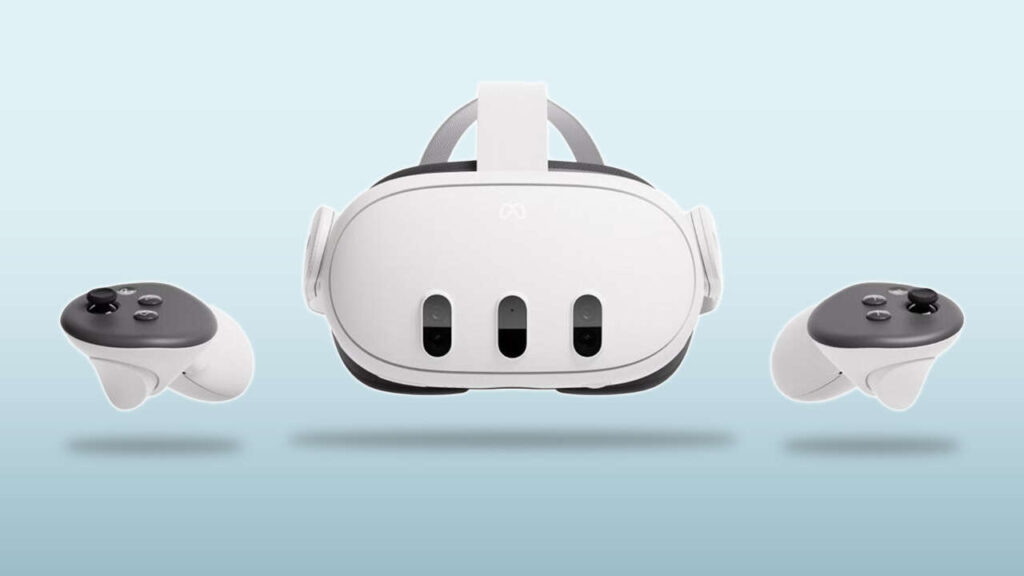In 2024, there’s no shortage of great VR headsets to choose from. Other valuable options. Some leverage the power of a gaming PC or console for better performance and visual fidelity. Others may be more affordable. No matter what you need, there’s a VR headset for you. So, to help you find the perfect VR headset, we’ve put together a list of the best VR headsets of 2024.
Find the best VR headset for you
The first thing to understand before buying a VR headset is that some VR games are exclusive to specific headsets. The Meta and both PlayStation headsets have their own storefronts with unique games that aren’t available on headsets from HTC, Valve and others. Of course, you can still get an impressive experience with a Valve Index or HTC Vive series of headsets, especially considering the rich library of VR games on Steam. Each VR headset has its own advantages and unique qualities, such as high resolution, AMOLED display, and built-in speakers.
Meta Quest 3 is a powerful mobile VR headset that gives you a great experience without needing to be tethered to a PC – no sensors required (although you have the option, if you wish). Valve Index requires you to be connected to a PC and use a sensor, but it also offers the most advanced VR experience available today. Of course, there’s PSVR 2, which has the advantage of being compatible with Sony’s lineup of first-party VR games. Keep in mind that the original PSVR had its own game library separate from PSVR 2. Each headset has its own unique features and benefits, so you’ll need to decide which one is best for you based on your price range.
Editor’s note: The article was updated on July 26, 2024
The best VR headsets of 2024
Meta task 3

Like previous Meta Quest headsets, the Meta Quest 3 is an all-in-one headset that can run games and VR apps directly on its internal hardware. Since it doesn’t require an expensive gaming PC or console to work, it becomes a more approachable and affordable VR option. However, that doesn’t mean the Meta Quest 3 lacks specs – quite the opposite in fact.
The Meta Quest 3 runs on a second-generation Qualcomm Snapdragon XR2 chipset paired with 8GB of RAM, and has either 128GB or 512GB of internal storage depending on the model. Its LCD screen has a 120Hz refresh rate and a resolution of 2064 x 2208 per eye. It even has built-in stereo speakers that support 3D spatial audio.
The Meta Quest 3’s hardware is powerful enough to run a host of games and apps natively, but if you need more horsepower, you can plug it into a PC and enjoy the boost in processing power and wider app and game support . But even as a standalone device, you can access a huge library of VR games and apps through the Meta Store or Xbox Games Pass.
Meta Quest 3 is also a powerful XR (mixed reality) device. It has a pair of 18 PPD (pixels per degree) RGB cameras that deliver full color pass-through with twice the resolution of the Quest Pro and ten times the resolution of the Quest 2. A lighter headset, 40% thinner than Quest 2.
The Quest 3 comes in two models: a $500 128GB model and a $650 512GB model. Obviously, the 512GB model lets you install more games, but other than that, both versions offer the same features and app support.
valve index
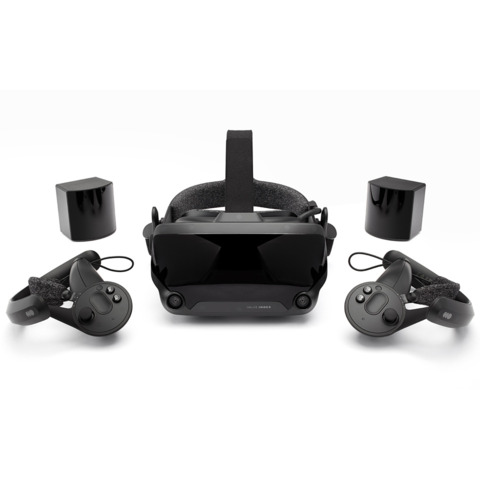
In terms of sheer technical prowess, the Valve Index is the best PC VR headset for gamers on the market. It doesn’t increase the resolution of the LCD display beyond 2880×1600, but the Index nails the most important aspects of VR: refresh rate and field of view. With a maximum 144Hz update rate and a 130-degree field of view, it brings the best and smoothest experience to virtual reality. With a higher field of view, you can see more of your game at any one time, as opposed to the relatively narrow field of view found in other headsets. Assuming you have access to a few wires and a lot of money to spend on a PC gaming rig and tethered headset experience, the Index and a good gaming PC will provide the best VR experience.
Another key aspect of the device is its unique motion controllers, which feature individual finger tracking and are a step up from products like the Oculus Touch. Not many apps support this yet, but finger tracking is a great way to make VR experiences more immersive – games like Boneworks make good use of it. While it can definitely be used in a seated or stationary environment, it works best with room-scale VR. Therefore, gamers who don’t have enough space may find it difficult to use the index to its full potential.
Valve Index also needs to be powered by a wired PC. Currently, there is no option for wireless use because the Vive Wireless Adapter, made specifically for the HTC Vive headset, is not compatible. However, the Valve Index is compatible with the HTC Vive’s controllers and base station, so Valve offers the Index headset separately and in kits. Additionally, the Valve Index’s controller and base station are compatible with HTC’s Vive headsets. A wireless adapter for the Valve Index is also in the works.
The Valve Index VR Kit comes with a headset, controllers, a pair of powerful built-in speakers (making it easy to enter the virtual world without completely disconnecting from the real world), and a base station. Alternatively, you can purchase a bundle of headphones and controllers or purchase the headphones separately. Every Valve Index purchase comes with a free copy of Half-Life: Alyx on Steam, allowing you to immediately continue the character’s story.
Metaexploration Professional Edition
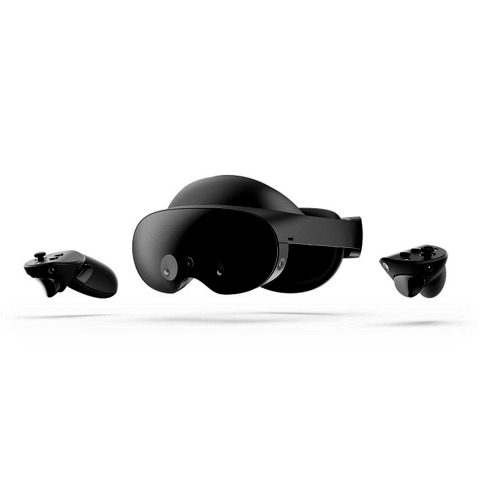
The Meta Quest Pro originally retailed for $1,500 and is now on sale for $1,000. This is more realistic for shoppers on a budget, and if you plan on using it a lot and don’t have a gaming PC, it’s worth every penny. In addition to a sleek, ergonomic design, you get a ton of luxury features not found on other standalone VR headsets.
No matter what you do with the Meta Quest Pro, it looks great on the LCD panel, which offers 1800×1920 pixels and a 106-degree field of view per eye. They also support local dimming for deep contrast for a vivid viewing experience. Its controllers are equally advanced, with three camera sensors each, up to 10 hours of battery life, and a Qualcomm Snapdragon 662 processor.
The list of impressive features goes on and on, with built-in speakers and microphones, 3.5mm audio input support, backwards compatibility with the Quest 2 library, 12GB of RAM, 10 VR/MR sensors and multiple facial tracking sensors , allowing Quest Pro to do things you can’t find elsewhere (no PC required). It’s not cheap, but it offers one of the best VR experiences money can buy.
HTC Vive Pro 2
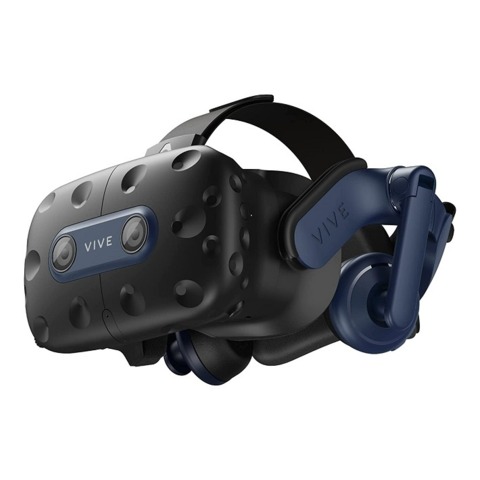
It may not have the same hype as the Valve Index, Quest Pro, or PSVR 2, but the Vive Pro 2 has quietly earned a reputation among VR enthusiasts. This is largely thanks to its premium display, with a resolution of 2448 x 2448 per eye, which puts it ahead of most others in its class.
Not only does it have thousands of pixels, but it also has 90Hz and 120Hz update rates. Combined with a 120-degree field of view, Vive Pro 2 makes it easy to immerse yourself in your favorite games. It’s not a standalone device (you’ll need a PC with at least a GTX 1060), but it’s a small price to pay for a good-looking device.
The Vive Pro 2 is also loaded with other high-end features (such as integrated dual microphones and ergonomic controllers) that make its hefty price tag easier to swallow. So if you don’t mind breaking the mold, consider taking a closer look at these headphones.
PSVR 2
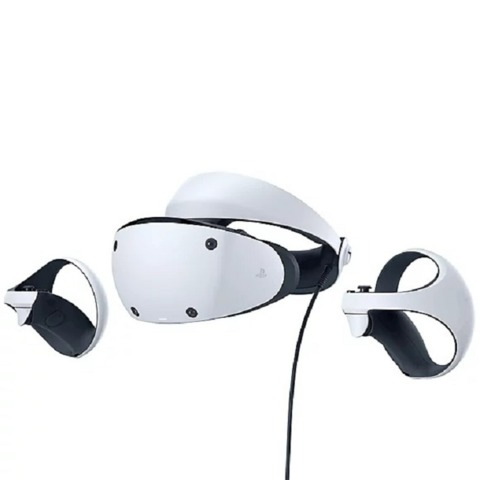
PSVR 2 is a giant leap forward from the original PSVR headset, featuring 4K HDR visuals, 110-degree field of view, and Sense technology that provides headset feedback, eye tracking, and 3D audio support. You can even use completely redesigned controllers designed for long gaming sessions and equipped with adaptive triggers, haptic feedback, and finger touch detection.
Sony launched PSVR 2 with an impressive library of games, and it’s only going to get more impressive in the coming months. Some standouts include Gran Turismo 7, Horizon: Call of the Mountain, Moss 2, and No Man’s Sky. Sony is also adding PC support for PSVR 2 starting on August 6, 2024, which will give the headset access to a larger library of games and apps.
Read our PlayStation VR 2 review.
PlayStation VR
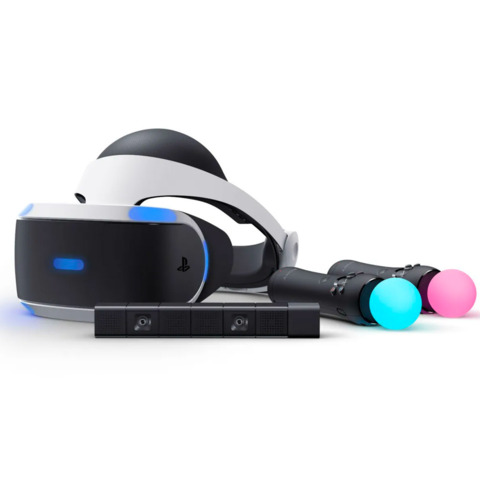
The PlayStation VR headset is compatible with PS4 and backwards compatible with PS4 games on PS5, but PS5 owners should opt for PSVR 2.
PlayStation VR offers a combined resolution of 1920×1080, a 90-120Hz update rate, and a 100-degree field of view. Low resolution and pixel density results in a significant screen door effect—you’ll see black spaces between each pixel. It makes it look like you’re watching the game through a screen door. This can be frustrating for experienced VR users, but since there are no other VR headsets on PS4, it’s something you’ll have to deal with. But what PSVR lacks in specs, it makes up for with its exclusive games. These games offer some of the best VR experiences and are well worth playing if you own one. Some games, such as Farpoint and Concrete Genie, require PlayStation Move controllers, but there are many great games that use the DualShock 4, including Astro Bot: Rescue Mission and Resident Evil 7: Biohazard.
PSVR requires the PlayStation Camera for tracking, but luckily it’s included in most bundles. If you already have PlayStation Camera for PS4, you can get started no matter which version you have. The tracking functionality isn’t on par with PC VR options, especially when away from the camera, although it does work fine for most games. Thankfully, the headphones are very comfortable to wear, which makes long sessions much more manageable.
Meta task 2
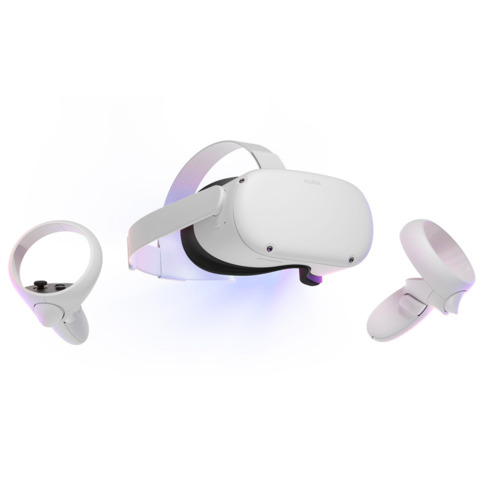
Meta Quest 2 is the perfect combination of price and performance. As a standalone headset that requires no additional hardware like a PC or console, Meta Quest 2 provides the easiest and most convenient way to start gaming in VR. It’s a nice improvement over the original Quest (which was already great), and you no longer need a Facebook account to use the device. Best of all, for those looking for better performance, you can use Oculus Link to connect it to a VR-ready PC and play games like Half-Life: Alyx.
Meta Quest 2 is powered by a fast Qaulcom Snapdragon XR2 processor and 6GB of RAM. The fast-switching LCD displays may not be OLED, but they still look great once you adjust the comfortable new backpack-style elastic straps and select one of three interpupillary distance settings. Images are crisp and clear thanks to each lens’ 1832 x 1920 pixel resolution.
Meta Quest 2 improves on the original in almost every way, but if you’re upgrading from the original, you probably won’t be shocked by the newer VR machine. That speaks volumes about the quality of the Quest 1, as it’s still an excellent headset. That said, there are some games that are only compatible with the Quest 2, such as the excellent Resident Evil 4 VR. For the most part, though, Quest 2 feels more like a smarter iteration of the original.
Meta Quest 2’s library has expanded significantly over the past few years. There are games of every major genre as well as tons of apps for watching TV, movies, and other entertainment experiences.
Meta Quest 2 comes in two storage capacities: 128GB and 256G. The 128GB model costs $400 and the 256GB model costs $430. Considering the slight increase in price, we recommend 256GB. Both models come with Golf+ and Space Pirate Trainer DX. Although the Quest 2 is more comfortable than its predecessor, some users may still experience discomfort and neck strain. If this is you, we recommend choosing a weight-balanced comfort belt.
Read our Meta Quest 2 review.

